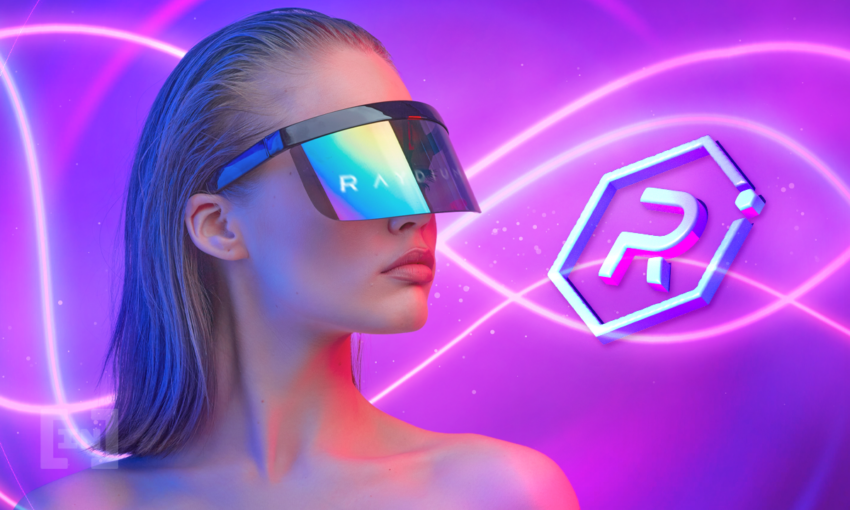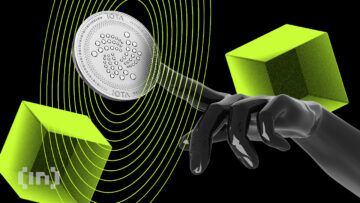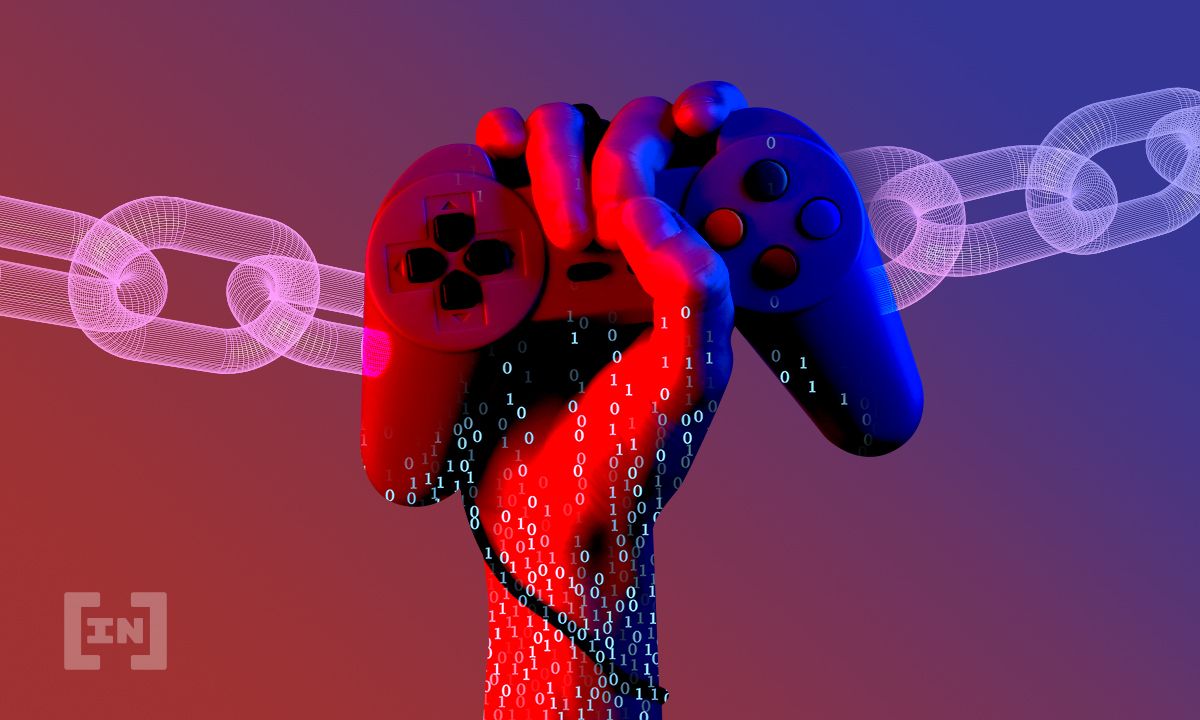The world of decentralized finance has evolved rapidly these past few years, and it’s changing faster than ever before. In early 2022, it recorded about $78 billion in Total Value Locked in (TVL). However, as much as there’s been so much activity in this space, issues such as high costs, and congestion in the Ethereum network, for instance, have been a major concern. As a result, both layer 1 and layer 2 protocols are being developed to tackle these challenges.
One notable platform focused on offering solutions, such as a fast and efficient AMM to users, is Raydium. Leveraging the Solana network, Raydium is committed to offering users and projects near instantaneous swaps, on-chain liquidity, and frictionless yield. Here we explain everything you need to know about Raydium, including how it works.
In this guide:
What is Raydium?

Raydium is an Automated Market Maker (AMM), decentralized exchange (DEX), and a token launchpad platform hosted on the Solana blockchain. It aims to solve the issues attached to decentralized AMM design, including high gas fees, unnecessary failed orders, and liquidity fragmentations.
By using Solana, Raydium offers high-speed and low-cost transactions and maximizes the central order book of the Serum DEX to offer optimized liquidity, seamless yield farming, and swift token swaps for users.
So far, the platform has landed several partnership deals to better offer users the best trading experience, with one major deal being that with Bonsai.
The team behind Raydium
Raydium’s ecosystem was launched in Feb. 2021, developed by a team of anonymous founders using pseudonyms with “ray” suffixes.
They include:
- AlphaRay: manages the overall business development, operations, and product direction for Raydium.
- XRay: the chief of technology and Dev Team manager.
- GammaRay: the chief of marketing handles marketing and communications for Raydium.
- StingRay: an experienced senior developer who manages the on-chain order book for the project.
- RayZor: a professional, smart contract developer who ensures the safety of capital in Raydium.
Raydium’s team of professionals hail from different backgrounds in marketing, algorithmic trading, blockchain development, mathematics, and more.
How does Raydium work?
While Solana’s high scalability allows Raydium to match orders with much better algorithms and operations than other AMMs, the platform seems to have distinctively balanced decentralization with efficiency. Let’s explore how it works.
Constant Function AMM
As mentioned above, Raydium offers on-chain liquidity to a central limit order book, meaning that both users and liquidity pools have access to the order flow and liquidity of the entire Serum ecosystem.
As a result, instead of utilizing dedicated market makers, anyone can literally provide liquidity to the supported pools by staking the assets represented in the pool. For example, if you wanted to become a liquidity provider for an SOL/USDC pool, you’d need to stake a specific preset ratio of SOL and USDC.
Additionally, to eliminate inconsistencies and ensure the proportion of assets in liquidity pools are balanced, Raydium uses a mathematical function K = Y*X to offer unlimited liquidity to users. Here, Y denotes the value of Asset A, while X depicts the value of Asset B, and K remains a constant.
The formula is stated to have a unique anonymity feature, allowing two tokens to co-exist without sharing information such as prices and value. Raydium is using this constant function in line with the Fibonacci sequence to give up to 20 orders at different prices with a low spread of about 20bps within them.
The Raydium ecosystem
Raydium is an AMM platform hosted on Solana, In addition, it offers interesting options for yield farmers to better maximize the best strategy to earn tokens. Users can also earn dual yields using its fusion pools via its official partnership with other Solana-running platforms.
There are other products Raydium provide, which we describe below.
Yield farming
When liquidity providers deposit tokens into a pool, AMMs automatically issue them LP tokens depicting their portion in the pool. This process allows Raydium users to explore farming opportunities that promise to increase their yields. These users can farm, lend, or borrow the innate RAY token and more rewards.
To participate in this system, you must deposit the correct digital assets’ ratio in a liquidity pool on the Raydium AMM protocol.
Upon validating the transaction, the protocol will send you LP tokens. In some cases, you can then lend or stake — this token into a different lending protocol and earn additional rewards. Doing this allows you to manage and maximize your earnings by leveraging the scalability and interoperability of the Raydium protocol.
Another feature of farming on the Raydium protocol is the ability of LPs to use their LP tokens to farm two tokens at the same time by depositing/lending them in a single pool. This process is fusion pools, and it provides two means for users to earn through farming on Raydium.
The AcceleRaytor
AcceleRaytor is an innovative concept by Raydium to boost the overall development of the Solana ecosystem. As stated on the website, this innovation will serve as a launchpad for the newest and upcoming Solana projects to generate capital and initial liquidity.
AcceleRaytor is made up of pools where users can deposit money to assigned project tokens. Each pool has its own certain set of instructions and requirements you must meet to join and participate in IDOs. As a result, you get to stake particular tokens for a specific period of time. Once the requirements are fulfilled, LPs can use the tokens deposited to buy the native currency of the project.
What makes Raydium different?
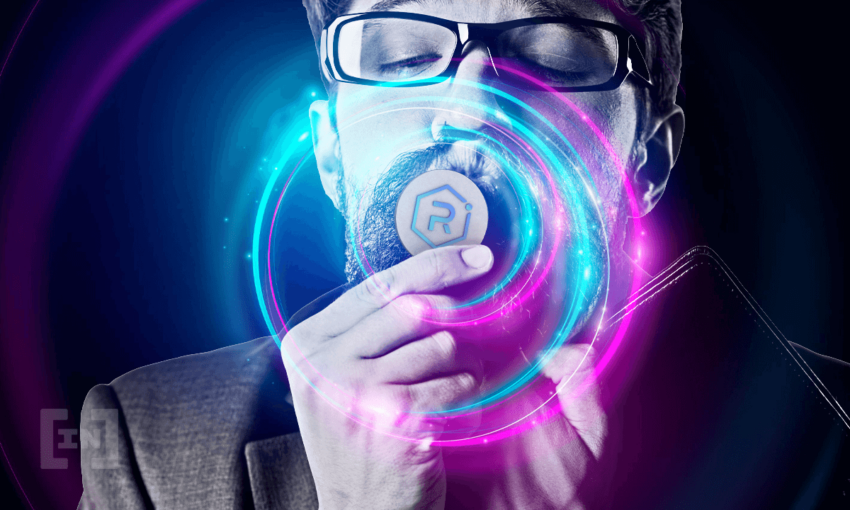
As the largest AMM project on the Solana ecosystem, Raydium offers some features that set it apart from competitors. It has a price swaps function that monitors the Serum order book’s liquidity pool to give users the most suitable pricing, for example.
Trade and swap
As mentioned above, using the Serum order book makes Raydium a more centralized exchange without savoring optimum performance. In lieu of this, the platform offers users a solid trading experience just like that of a regular centralized exchange (CEX). Raydium brings the experience on CEX to DEX by integrating order books, charting, and other reliable limit orders on other DEXs.
However, with these CEX features, Raydium is still restricted to some features compared to other centralized cryptocurrency trading platforms. For instance, while you can easily set limit orders for trades, there’s no option for market trades or stop losses. The Raydium Swap option also allows users to seamlessly swap SPL tokens with another within the exchange platform.
Adding liquidity
Like swapping your SPL tokens, you can also earn an income by providing liquidity to Raydium’s liquidity pool. The list of the pools is available on the platform’s website.
It’s essential to note that Raydium taps its liquidity from its own pools, and Serum’s order book is accessible and shared by all Serum users. This automatically increases liquidity and reduces slippage for traders.
About transaction fees, Raydium charges a 0.25% fee on all trades and swaps. 0.22% returns to the liquidity pool, and it’s used to incentivize liquidity providers. Likewise, 0.03% goes back to the staking pool, which rewards those who stake their RAY tokens.
Swapping
Serum integration helps Raydium to offer swaps. Similar to what exists on other AMMs like Uniswap, Aave and more, Raydium allows users to switch from many SPL tokens to another.
Typically, it’s important to note that you can only swap SPL tokens (the standard for Solana-based cryptocurrencies) on raydium. However, if you are a core fan of Ethereum but somehow find this option interesting, you can use the cross-chain functionality of Serum and easily switch your ERC-20 tokens into SPL coins through a wallet service running on Solana.
Interestingly, what sets Raydium apart from its competitor is the way it manages slippage. Normally, when slippage happens on other platforms, the tolerance is always low. As a result, they cancel the swap. Instead, Raydium minimizes user costs by implementing a feature called “worst price.” It essentially counts the maximum amount of Slippage tolerated by the user and then deletes the rest. This automatically betters gas costs and trading fees on the trader’s side.
Farming on Raydium
Raydium farms are pools that allow liquidity providers to generate RAY tokens from their LP tokens in regard to the trading fees contributed to the pool.
Farming on Raydium is similar to the regular farming options in DeFi. Users can earn tokens for providing liquidity, in addition to trading fees. Those farming in Raydium farms earn RAY, while those farming in Fusion pools can earn project tokens. The whole concept is to offer users an interesting way to earn more assets from their existing tokens.
Advantages of Raydium
Low fees and swift transaction
Raydium solves the common issues associated with transactions on ethereum, such as high fees and high congestion resulting in slow transaction confirmation. The protocol does this by tapping into Solana’s high TPS and other scalable features to offer users fast transactions at a very low cost.
Improved liquidity
With access to Serum’s order book, Raydium provides users optimum liquidity. Unlike other protocols that rely only on their own liquidity pools, Raydium connects with liquidity pools available on the central order book on Serum and offers access to liquidity on the whole protocol.
Experience CEX features on DEX
Raydium solves this by introducing options to view trade charts and set limit orders while having full control over their funds. They can also enjoy improved swapping, allowing them to exchange two tokens at an improved speed using Raydium’s swap feature. The Serum DEX also allows users to access more intricate tools, such as limit orders.
Disadvantages of Raydium
Vulnerability
Raydium’s team is not known to its users. Instead, the founders used pseudonyms to identify themselves. This increases the risk attached to users depositing their funds, as they are prone to losing. The anonymous owners can easily run away with users’ funds. And unfortunately, it might be difficult to track them.
Impermanent loss
When providing liquidity to the raydium protocol, some risks, such as impermanent loss might occur. Ultimately, this is the difference between holding assets in a smart contract and keeping them in a wallet. When supplying liquidity, you could end up with an imbalanced ratio of the tokens, depending on how users trade. If the value of one of the tokens decreases, you could lose and end up losing the actual token you’re staking.
Security attacks
The fact that Raydium uses an SPL wallet to enable users to access the protocol has increased their chances of getting attacked. Many hackers today target the large volume of funds traded in a pool as a good place to steal.
The RAY token
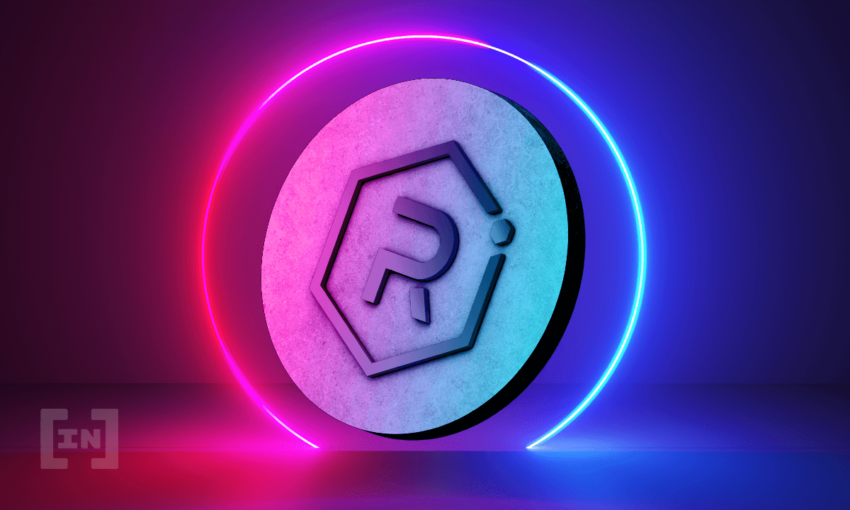
RAY is the native asset of the Raydium network. It’s hosted on Solana’s SPL token standard, as well as an ERC-20 token on Ethereum.
RAY token offers users many uses, including earning protocol fees, staking, and receiving allocations to token launch events. Additionally, RAY token is used for protocol governance. RAY holders can vote on proposals to update the ecosystem. They can also earn RAY tokens by providing liquidity to pools known as Raydium farms.
Tokenomics
Overall, RAY tokens have a 555 million max supply, minted upon launch, with about 119 million RAYs in circulation. It has about $229 million in Total Value Locked (TVL), and most of the tokens go to yield farming and improving the network’s overall performance. The full allocation is described below.
RAY Token Allocation
- Mining Reserve: shares 34% of the total supply with about 188 million RAY.
- Partnership & Ecosystem: 30% goes to partnership programs with around 166 million RAY
- Team: the founding team gets 20%, accounting for 111million RAY
- Liquidity: 8% for liquidity, amounting to about a 44million RAY.
- Community & Seed funding: about 33 million RAY goes to seed funding. This is 6% of the whole max supply.
- Advisors: these people get about 11 million RAYs. That’s 2% of the total supply.
Token Distribution
The token was launched via Liquidity Mining in Feb. 2021, with an initial supply of 555 million RAY. At launch, 22% goes to the Founders, and 22% and 78% are used as Premined Rewards and Airdrops.
Price and price prediction
Since RAY token was launched in Feb. 2021, many analysts have been making predictions on its price to explore earning opportunities for users. Currently, the RAY token has an all-time high of $16.9 and an all-time low of $0.59. In Jun. 2021, the token experienced a notable drop from $6.7 to $4, accounting for a 40.3% decrease in year-to-date (YTD) ROI.
RAY staking

Raydium protocol allows single asset staking, meaning RAY holders can stake their RAY token. Staking RAY provides an easy way to earn extra tokens with up to 25% annual percentage yield APY.
To participate in this program, all you need to do is deposit your RAY tokens and earn interest in RAY. Your tokens aren’t locked, so you can withdraw your staked token anytime. Aside from earning APY on your assets, you can also participate in the subsequent updated and new partnership programs implemented on the protocol.
How to buy Raydium (RAY)
RAY token is listed on virtually all the major centralized crypto exchanges, including Binance, Kraken, Coinbase, and a lot more. As a result, buying Raydium is easy as you only need to register on a platform and explore their buying options. Likewise, aside from buying on centralized crypto exchanges, you can explore and buy on some of the popular non-custodial wallets such as Trustwallet, MetaMask, and more.
For this guide, let’s explore the step-by-step guide on how to buy Raydium on Binance, the largest crypto exchange in the world.
1. Create an account
Having a Binance account gives you a seamless gateway into the crypto world. However, before buying RAY here, you need to verify your account by doing some KYC that involves submitting your ID.
2. Select your buying option for Raydium (RAY).
Tap on the “Buy Crypto” link on the top left of the Binance website, and you’ll get all the options available in your country.
For an easy and less stressful method, you can buy a stablecoin such as USDT or BUSD and then use it to purchase Raydium (RAY) by clicking on the corresponding coin pair such as RAY/USDT or RAY/BUSD
3. Click RAY/USDT
Upon tapping this, you can buy RAY with your available USDT by clicking on “Buy.” Upon buying RAY, you can hold for a potential increase and probably stake it to earn more money.
What is lies ahead for Raydium?
Raydium is one of the biggest DApps being developed on the Solana blockchain. By tapping into the latter, it stands to make an impact on the DeFi space. It also has a few unique features going for it.
However, the DeFi market moves fast, so there’s no guarantee that it is going to succeed. As always, do your own research.
For information on more projects like Raydium, head over to the BeInCrypto Telegram group. The community discusses all sorts of projects, so you’ll always be learning something new!
Frequently asked questions
What is Raydium?
Raydium is an Automated Market Maker (AMM), decentralized exchange (DEX), and a token launchpad platform hosted on the Solana blockchain.
Is Raydium token a good investment?
Raydium provides users several ways to make money, which include staking, farming, providing liquidity, and regular trading.
Where can I buy Raydium?
RAY is one of the most prominent Solana projects, so it’s pretty easy to come by. You can buy Raydium on the most popular crypto exchanges, including Binance, Coinbase, and FTX.
Is Raydium on Binance?
Yes Raydium is available on Binance.
What is Raydium farming?
Raydium farms are pools that allow liquidity providers to generate RAY tokens from their LP tokens.
What is the Raydium pool?
Raydium pools are a collection of RAY tokens. Similar to other AMMs, liquidity providers can earn rewards for adding liquidity.
